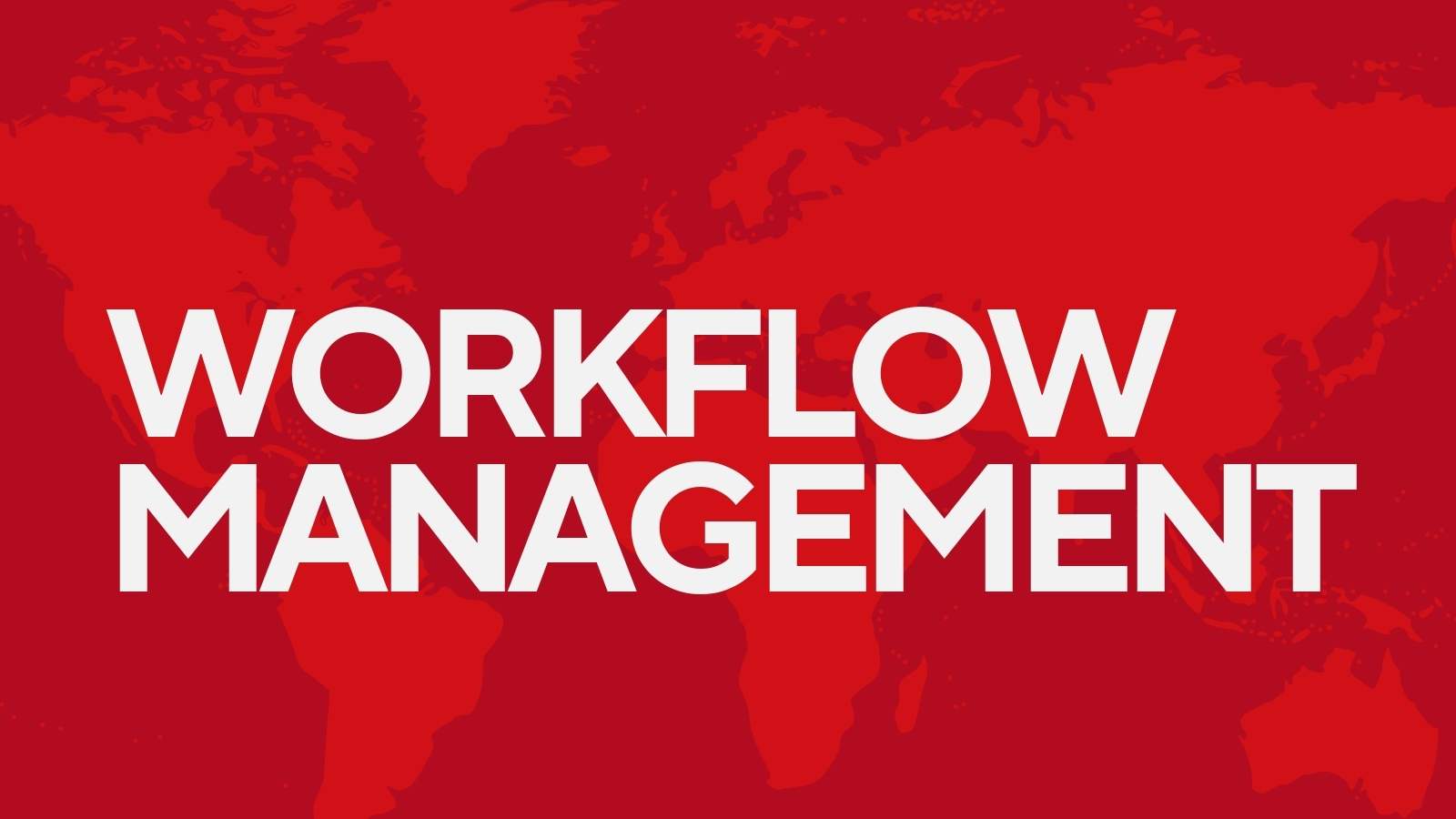Are you seeking to streamline success and master workflow management for your team’s improved productivity? Imagine a work environment where every task flows seamlessly from one to the next, each team member perfectly in sync with the wave of progress. This isn’t just a distant dream but a tangible reality that can be achieved with the right know-how. Dive into our latest blog post where we unravel the secrets to optimising your team’s workflow, ensuring that every project is a step towards greater efficiency and success. Let’s embark on this journey together to transform your team’s productivity from satisfactory to extraordinary.
As organisations grapple with a myriad of tasks, deadlines, and ever-evolving goals, mastering workflow management has become crucial to team productivity and overall success. Streamlining processes to eliminate unnecessary steps, enhancing communication, and optimising resources is an art form that can transform chaos into order.
In this blog post, we’ll delve deep into the practices of effective workflow management, offering proven strategies and innovative tools designed to boost your team’s performance. Whether you’re leading a small team or orchestrating a vast corporate symphony, these insights will help you fine-tune your operations, allowing your collective efforts to crescendo into a harmonious peak of productivity.
The Importance of Effective Workflow Management
Process management is a key factor in streamlining success and increasing team productivity. Clear and consistent processes are essential for avoiding confusion and delays, while also reducing costs and eliminating wasted resources. Streamlining processes can also help to improve communication and collaboration between team members. Automation is also an important factor in reducing manual effort and increasing efficiency.
Process management is a great way to identify areas of inefficiency and make improvements. Standardising processes can lead to more consistent results and fewer errors. Implementing process management can also help to increase employee satisfaction and motivate team members.
It is essential to have a well managed workflow to ensure a smooth running team environment and successful project completion. Streamlining processes and automating tasks can help to reduce complexity and free up resources, leading to increased productivity and improved team morale. Taking the time to organise and optimise processes can go a long way in ensuring success and driving team performance.
Key Principles of workflow Management
Effective workflow management is essential for optimising productivity and ensuring successful projects. To streamline success, businesses must take the time to map out their workflow processes, automate where possible, use technology to their advantage, and prioritise tasks.
By mapping out the key stages of the workflow process, businesses can visualise the process and identify any areas of the workflow which can be improved. Automation can help to reduce manual tasks and free up time for more important tasks. Technology can provide a structure and framework for tracking and managing processes. Prioritising tasks according to importance and complexity allows businesses to better allocate resources to ensure tasks are completed on time and up to standard.
Monitoring progress and analysing performance is key to staying on top of the workflow and identifying areas for improvement. It is also important to establish a communication plan to ensure all stakeholders are kept in the loop and any problems are quickly identified and resolved. Collaboration between team members ensures everyone is working towards a common goal, and data can be used to make informed decisions about how to streamline the workflow.
To further enhance the mastery of workflow management, it is essential to embrace technology that fosters efficiency. By integrating cutting-edge software solutions, businesses can automate mundane tasks, freeing up valuable time for team members to focus on more strategic initiatives. This technologically savvy approach to process automation not only reduces the likelihood of human error but also accelerates the completion of tasks. When selecting the perfect tools, it is crucial to consider how they align with your current systems and whether they can adapt flexibly to the evolving needs of your organisation.
Also Read: Project Management Tutorial for Beginners
Analytics play a pivotal role in refining workflow management. Robust analytics platforms can interpret large volumes of data, providing actionable insights that empower leaders to make strategic decisions with confidence. These insights shed light on performance bottlenecks and highlight opportunities to optimise processes for better resource allocation. Consequently, organisations that effectively harness the power of analytics not only excel at current projects but also lay the groundwork for future success by continuously learning from their operations.
Ultimately, the pursuit of workflow mastery is an ongoing journey. It demands a commitment to best practices in process management, a willingness to invest in the right technology, and an unwavering focus on data-driven decision-making. By following these principles and staying attuned to the latest advancements in workflow optimization, teams can achieve a level of productivity that sets them apart in today’s competitive landscape. Keep visiting our blog for more insights on how to streamline your business processes, and don’t forget to subscribe to our newsletter for the latest updates on managing effective workflows.
By following these steps, businesses can ensure they are making the most of their workflow processes, leading to improved team productivity and ultimately, success.
Common Workflow Management Challenges
Good workflow management is essential for teams to achieve success in a timely and efficient manner. Poor communication between departments, a lack of visibility into the progress of projects, and unclear roles and responsibilities for team members can all lead to a lack of productivity. Additionally, insufficient documentation of processes and procedures, unreliable tracking of tasks and resources, and difficulties in making timely decisions can all be major obstacles to success.
Uncoordinated change management, inadequate monitoring and reporting of results, unclear goals and objectives for projects, and difficulty in adapting to changing conditions can all be addressed with effective workflow management. By creating a clear framework for how tasks should be completed, each department can better understand their role and how it contributes to the overall goal. This will allow teams to work more productively and efficiently, and make decisions more quickly.
By setting up clear goals and objectives, teams can measure their progress and adapt quickly to changing conditions. Additionally, by documenting processes and procedures, teams can easily track tasks and resources, and stay informed of the progress of projects. This can help teams make timely decisions, and better manage any changes that may occur.
Finally, by implementing reliable monitoring and reporting of results, teams can evaluate their progress and make sure that they are meeting their goals and objectives. With a clear overview of the current workflow, teams can identify areas of improvement and adjust their processes accordingly.
By streamlining the workflow management process, teams can improve their productivity and achieve their goals in a more timely manner. Through improved communication, visibility into the progress of projects, clear roles and responsibilities, and reliable tracking of tasks and resources, teams can ensure a successful workflow and maximize their team’s productivity.
3 workflow components
Streamlining success is an important part of any business – and mastering workflow management is an essential part of that. Improving team productivity can help businesses reach their goals more efficiently and effectively. Here are some tips to help you achieve that:
1 – Establish clear goals and objectives
Before you can begin to streamline your workflow, you need to make sure everyone is on the same page. Establishing clear goals and objectives is the first step to success – it helps ensure everyone is working towards the same goal.
Importance of establishing clear goals
Certainly! To elaborate on the importance of establishing clear goals and objectives as part of a workflow in an SEO (Search Engine Optimisation) blog post focused on improving team productivity, consider the following expanded section:
Also Read: Project Management Software for Your Small Business
A foundational step in mastering workflow management for enhanced team productivity lies in the unified understanding of what needs to be achieved. Clear goals and objectives function as the compass that guides every team member’s activities and efforts, aligning them with the overarching vision of the project or organisation.
Setting the Direction
Commencing any SEO campaign without explicitly defined outcomes is akin to setting sail without a destination. It leaves room for misinterpretation, inefficiencies, and ultimately, subpar results. Therefore, as a priority, SEO managers and teams must collaboratively outline what constitutes success for their project. This could involve improving search engine rankings for specific keywords, boosting organic traffic, enhancing user engagement, or increasing conversion rates.
SMART Objectives
To ensure effectiveness, these objectives should be SMART: Specific, Measurable, Achievable, Relevant, and Time-bound. For example, rather than setting a vague goal such as “increase website traffic,” a SMART objective might be “achieve a 20% increase in organic traffic within the next six months through targeted content creation and on-page SEO optimisation.”
Communication is Key
Once these goals and objectives are defined, they must be effectively communicated across the entire team. Every member, from content creators to technical SEO specialists, should understand not only what is expected of them but also how their individual tasks contribute to the larger objectives.
Regular Review and Adaptation
Goals should not be set in stone; they must be dynamic and flexible, accommodating shifts in the market, algorithm updates, and insights from data analytics. Embracing adaptability allows the SEO team to adjust tactics, refine workflows, and maintain relevancy amidst evolving search landscapes.
Ensuring Alignment
Finally, aligning individual responsibilities with the stated objectives ensures that resources are deployed efficiently. When everyone knows their role in reaching the common goals, there is less duplication of effort and more opportunities for collaboration and innovation.
By emphasising the establishment of clear goals and objectives, an SEO team can foster a shared vision, create a roadmap for success, and maintain a focused approach to their workflow. This results in a streamlined process which, in turn, drives improved productivity and better results from SEO efforts.
2 – Map out the workflow
Once you have established the goals and objectives, you need to map out the workflow. This will help you identify any redundancies or bottlenecks in the process, so you can adjust the workflow accordingly.
3 – Monitoring
Regularly monitoring and reviewing progress is essential in order to ensure the workflow is running smoothly and efficiently. Make any adjustments as needed to improve the workflow and help your team reach their goals.
By following these tips, you can make sure your team is working as efficiently and effectively as possible. Streamlining success is the key to success for any business – and mastering workflow management is an essential part of that.
4 benefits of workflow management
Workflow management is an essential part of any team’s success in today’s fast-paced business world. By streamlining processes, teams can improve their productivity and efficiency, allowing them to complete tasks faster. Automating tasks and streamlining workflow processes can help teams manage multiple tasks in an organized manner, allowing them to collaborate more effectively.
Automation of tasks is one of the most important aspects of streamlining workflow management. This allows teams to save time and resources, allowing them to work more efficiently. Automation can help teams to identify and eliminate bottlenecks, reducing the time it takes to complete tasks. Automation also helps to ensure that tasks are completed accurately and on time, which can lead to improved customer satisfaction and better team morale.
In addition to automation, teams can also streamline their workflow management processes by keeping track of tasks and progress. Teams can use workflow management tools to monitor progress and ensure that tasks are completed in a timely manner. By tracking tasks, teams can ensure that they are staying on track and that tasks are being completed as expected. This can help teams to identify any potential issues and take corrective action quickly and easily.
Streamlining workflow management is an essential part of any team’s success. By automating tasks and tracking progress, teams can improve their productivity and efficiency, allowing them to complete tasks faster. Improved team productivity leads to better customer satisfaction, increased team morale, and improved overall success.
1. Consistent task delivery
Having a streamlined workflow management system is essential for improved team productivity. Consistent task delivery is key to ensuring that all team members are working towards the same goal and are on the same page. Streamlining the task delivery process can help to save time on mundane tasks, allowing team members to focus on more important tasks. Automating task delivery can help to ensure that tasks are sent out on time and that everyone is kept up to date with the tasks that need to be completed.
Having a clear and concise task delivery process can help to reduce confusion and improve communication between team members. A well-structured task delivery system should be regularly monitored to ensure that tasks are being delivered on time and that any changes to the task delivery process are communicated effectively. By streamlining workflow management, teams can improve their productivity and get the most out of their work.
2. Boosted productivity
When it comes to optimizing team productivity, streamlining workflows is key. By identifying and addressing roadblocks that impede productivity, teams can make sure they are functioning at their highest level. Automation and integration of systems can help to process large amounts of data quickly and efficiently. Consolidating communication channels and leveraging real-time collaboration tools can help teams collaborate more effectively and stay on top of tasks.
Project management systems can also help teams to plan, track and monitor progress, and identify potential problems before they arise. Data analysis tools can help teams to identify trends and patterns in data, and make more informed decisions. Finally, analyzing employee performance and feedback can help teams to better understand their strengths and weaknesses, and to ensure that goals are being met.
By streamlining workflows and utilizing the right tools, teams can make sure they are working at their most productive. With the right strategies and tools in place, teams can maximize efficiency and reach their goals.
3. Eliminated redundancy
Good workflow management is essential for any team to achieve optimal productivity. By streamlining processes and improving efficiencies, organisations can ensure their teams are working as efficiently as possible. To ensure the best possible workflow, it is important to identify areas of the workflow that could be improved, analyse current processes to determine where efficiencies can be made, create a plan that outlines the changes to be made, implement the changes in stages, train staff on the new processes, monitor the new processes and make adjustments as needed.
To start streamlining processes, it is important to identify areas of the workflow that could be improved. Take a look at the current workflow processes to see where efficiencies can be made. It may be helpful to talk to team members to get a better understanding of how they approach their work and any areas they think could use improvement. Once you have identified areas that need to be streamlined, create a clear plan that outlines the specific changes that need to be made.
The next step is to implement the changes in stages. This will help to ensure that any issues are identified and addressed early on. It is also important to train all staff on the new workflow processes and to ensure they understand the importance of following the new processes. Once the new processes are in place, it is important to monitor them to ensure they are being followed correctly. If any issues do arise, make adjustments as needed to ensure the most efficient workflow possible is in place.
By taking the time to streamline processes and improve efficiencies, organisations can ensure their teams are working as efficiently as possible. With the right workflow management in place, teams can achieve maximum productivity.
4. Improved work culture
Improved work culture is essential in creating an environment that encourages team members to work smarter, rather than harder. This can be achieved through increased engagement and collaboration between team members, which ultimately leads to improved productivity.
Streamlined processes and systems can significantly reduce the amount of time and effort spent on mundane tasks, freeing up resources to focus on more important tasks. Improved communication and transparency within the organisation can also help to reduce stress and improve morale. By streamlining success through effective workflow management, organisations can ensure that their teams are working efficiently and productively.
Streamline your processes using RisePath
Organising and streamlining a team’s workflow can be one of the most effective ways to improve productivity and efficiency. With the right tools and processes in place, teams can save time, reduce errors, and increase their overall effectiveness. Here are some tips on how to master workflow management for improved team productivity:
RisePath is an excellent tool for streamlining processes and ensuring efficient workflow management. This central repository of information provides visibility and easy access to all team members. Customised workflow templates can also be used to automate manual tasks, saving time and energy.
Project management tools are a great way to manage resources and tasks. Customised databases can also be created for easier data access and manipulation. Additionally, collaboration tools can be leveraged to keep teams in sync. Task tracking and completion tracking tools can also be utilised to monitor progress.
Reminders and notifications are a great way to keep team members on track. Customised dashboards can also be created for easy visualisation of progress. Finally, analytics can be used to gain better insights into team performance.
By implementing these strategies and tools, teams can greatly improve their workflow management and increase their efficiency and productivity. Streamlining processes, automating tasks, and leveraging the right tools can make a huge difference in the success of any team.




Comments are closed, but trackbacks and pingbacks are open.